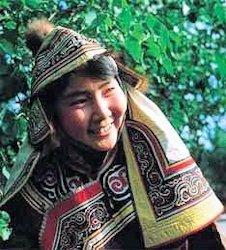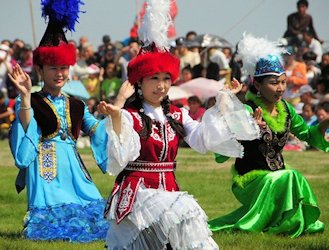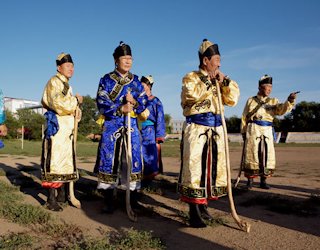|
34. Chinese Nationalities (Daur Minority) -- Minorities by Descending Populations |
||

|

|

|
| Daur Lady | Daur Group | Daur Men |
|
The Daur people are thought to be descendants of the Khitan, an ancient nomad tribe who lived in the lower reaches of the Heilong River and founded the Liao Dynasty (916-1125). In the early Qing Dynasty, groups of Khitans migrated into China's western region and formed a new ethnic group, the Daur people. The Daur language consists of three dialects - Buteha, Qiqihar and Xinjiang, and belongs to the Mongolian Austronesian of Altai Phylum. They have no written language of their own. During the Qing Dynasty, they used Manchu as their written language. The Daur people communicate with each other, and with the other local ethnic groups, in Chinese, Mongolian, Uigur, Kazak, and Ewenki. The Daur people mainly engage in agriculture, along with stock breeding and hunting. Their major crops include maize, sorghum, wheat, soybeans and rice. Their diet consists of millet and buckwheat. Favorite dishes of the Daur people are millet or buckwheat noodles mixed with milk, buckwheat cakes and oat porridge cooked with soybeans. They also enjoy pork, beef, mutton, fish and chicken. The Daur have a tradition of grain and vegetable farming and animal husbandry as well as logging, hunting, and fishing. The Daur are found in Heilongjiang Province and the Xinjiang and Nei Mongol Autonomous Regions. This nationality has a strong spoken-language and a cultural affinity with the Mongolians. There is a rich oral literature but no written script. Their main religion is shamanism. They are part of the Altaic Mongol ethno linguistic group. |
||
| Return to Chinese Nationality List On to No. 35 Minority Salar ⇨ | ||